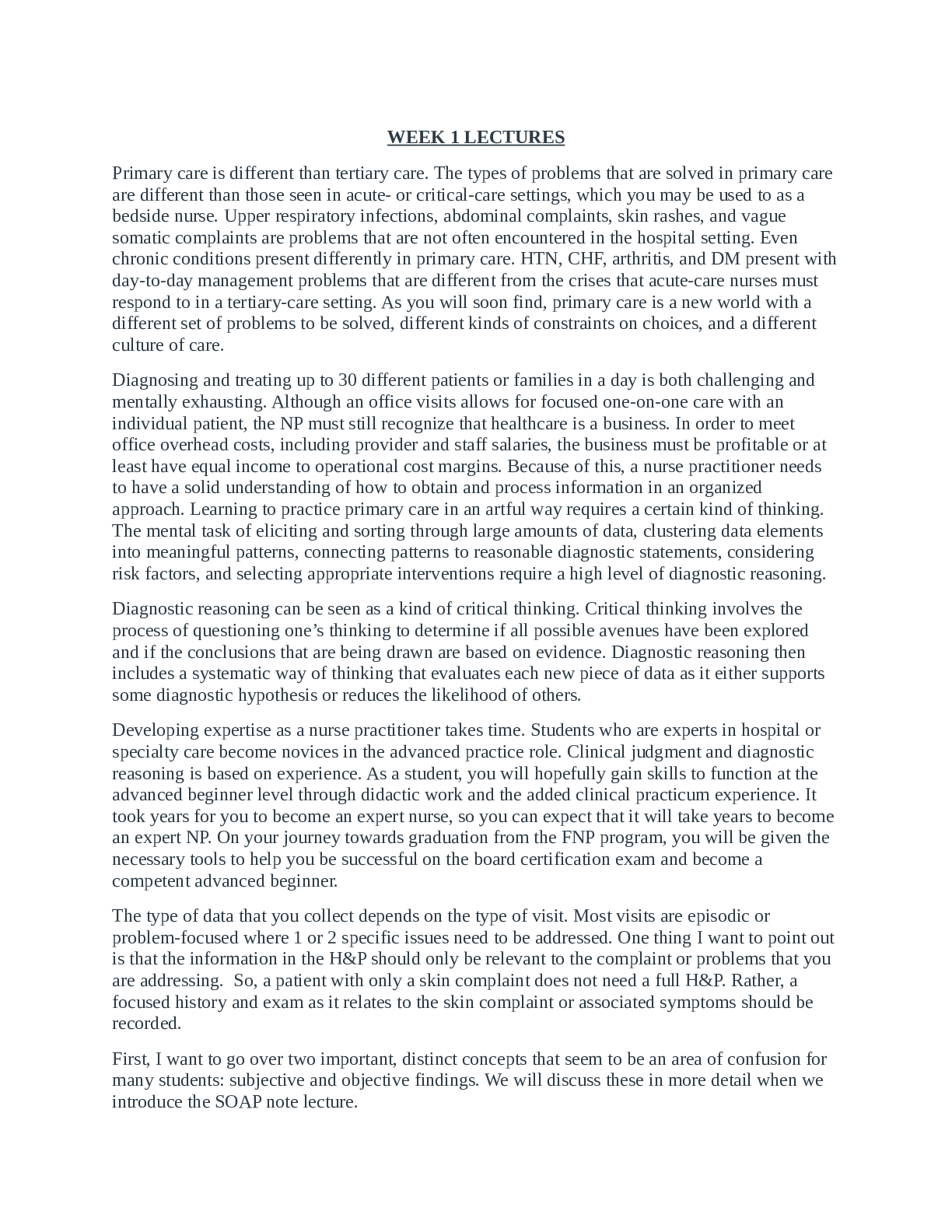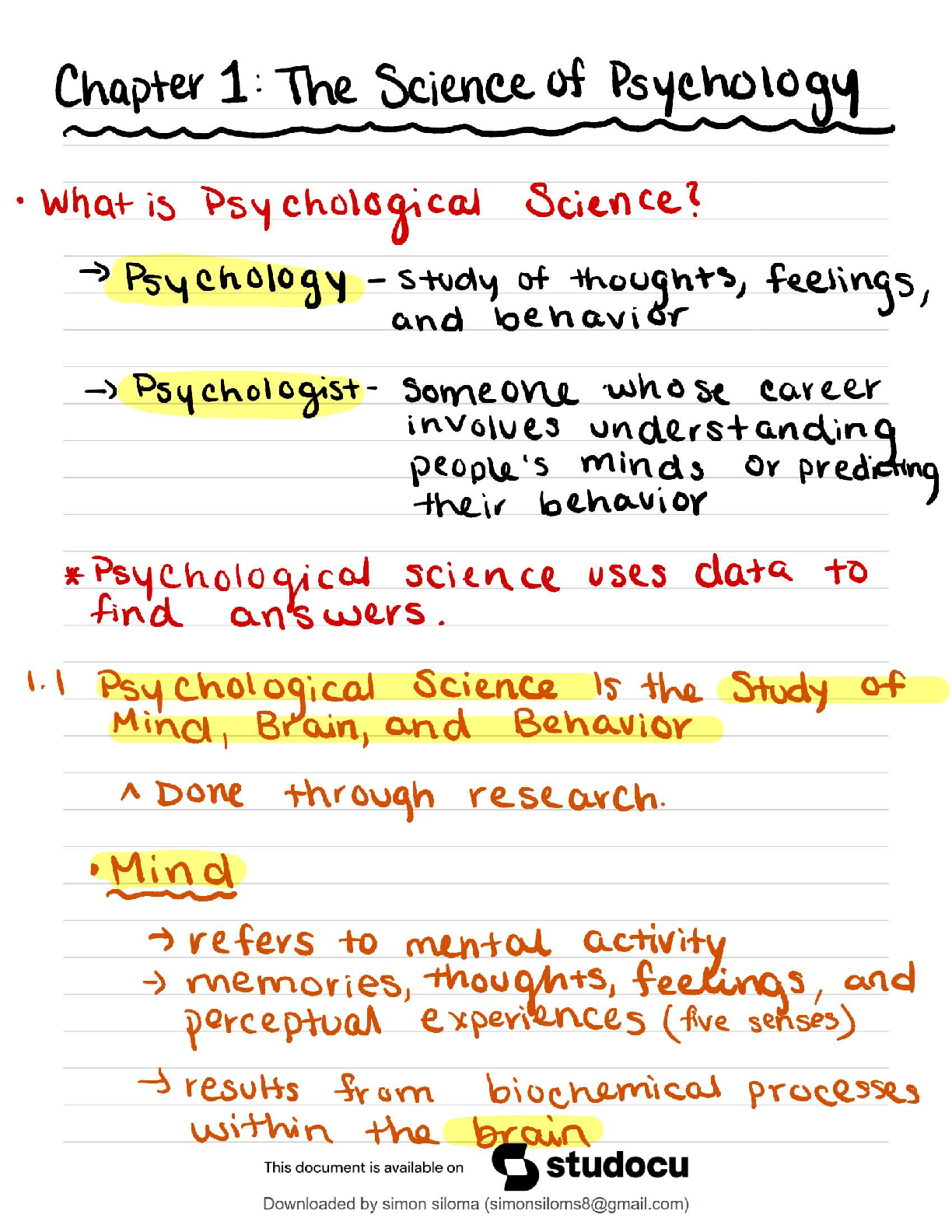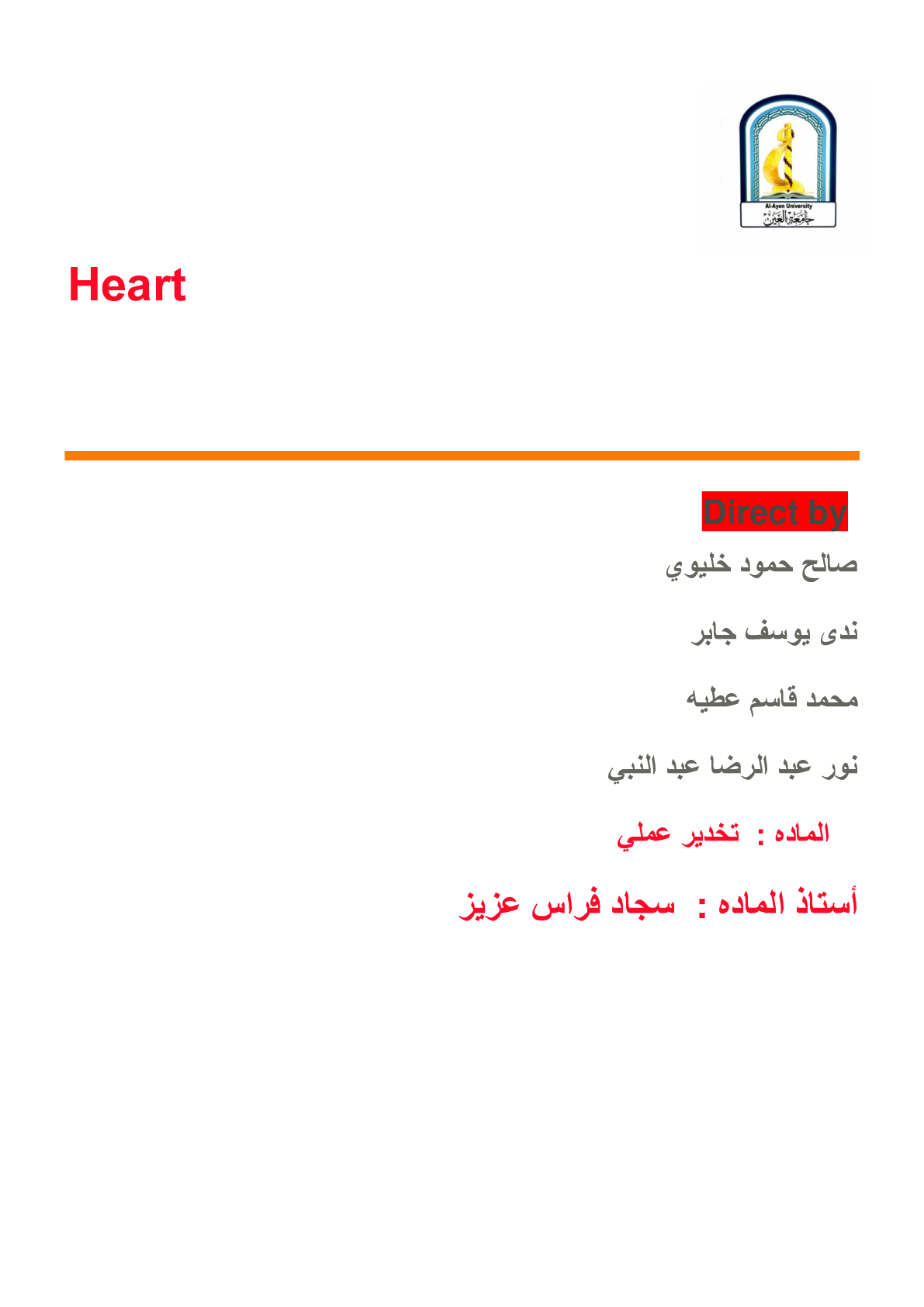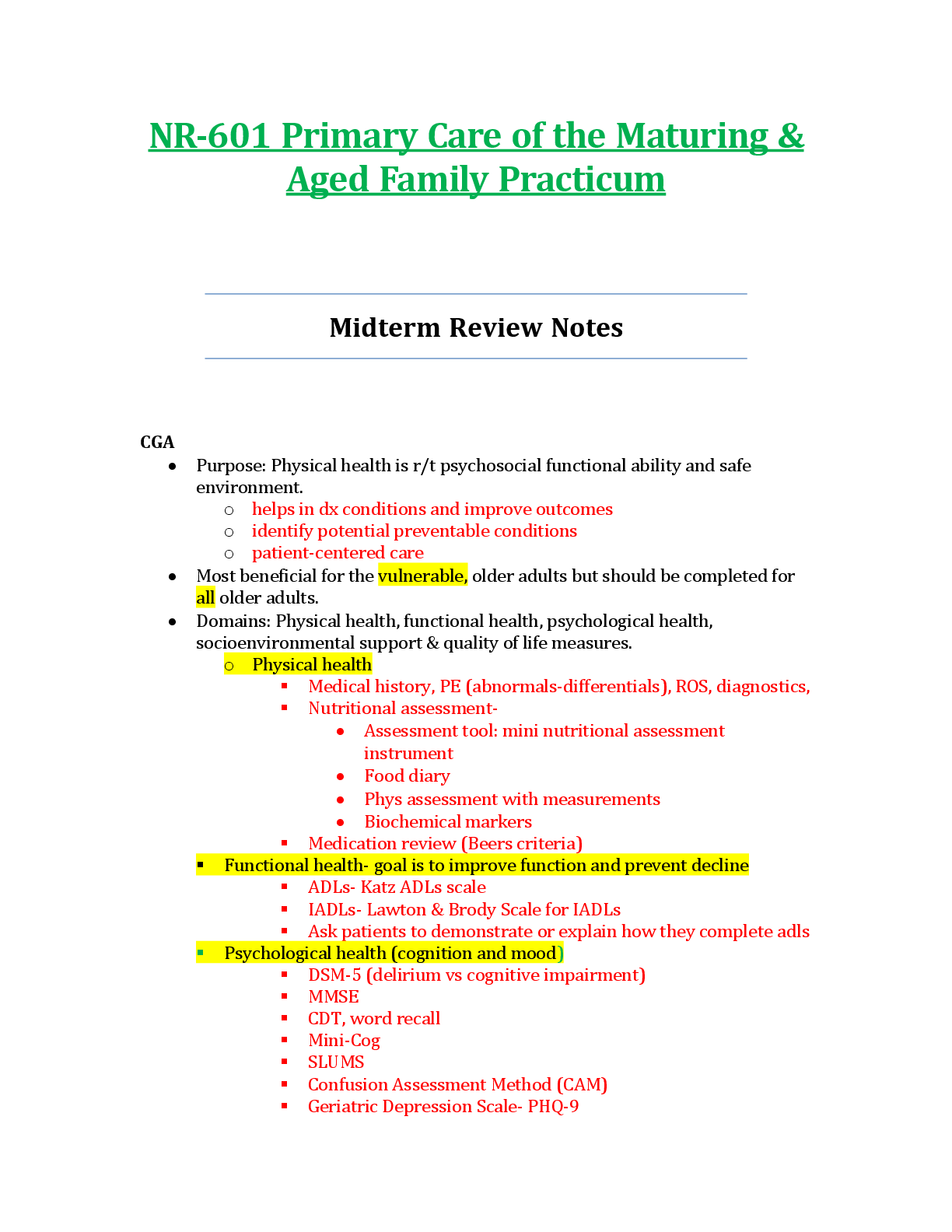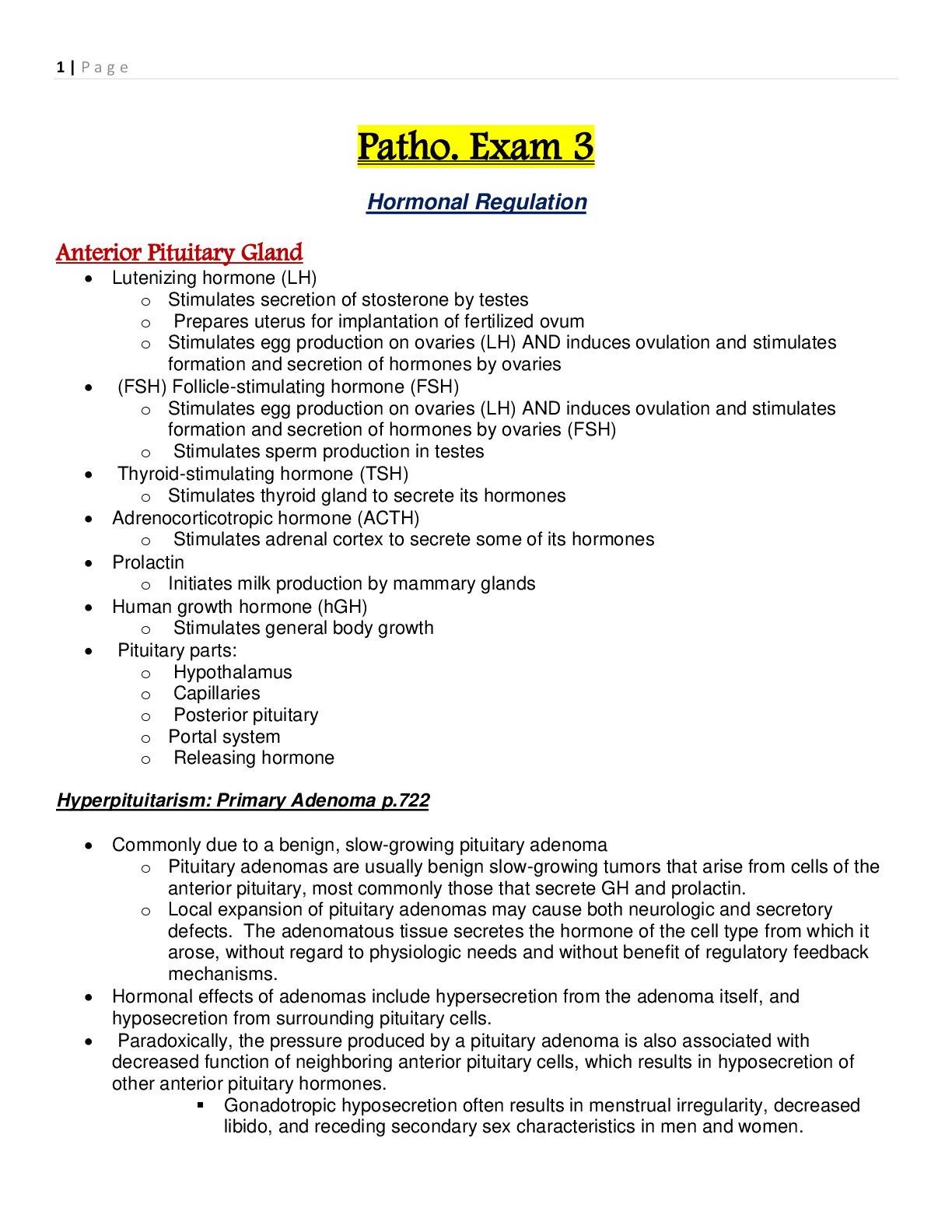Communication > Study Notes > Chapter - 1Unit 3 - Post Graduate Diploma in Business...MBA 101 (NOTES) (All)
Chapter - 1Unit 3 - Post Graduate Diploma in Business...MBA 101 (NOTES)
Document Content and Description Below
Chapter - 1Unit 3 - Post Graduate Diploma in Business...MBA 101 (NOTES) Chapter I Understanding Communication: the Definitions, the Process and the Elements Aim The aim of this chapter is: • ... To enrich the students with the knowledge of communication and its definitions • To enlighten them with the process of communication • To enrich them with the necessity of communication Objective The objective of this chapter is: • To enrich the students with the main components of communication • To enable them to define communication • To enlighten them with the elements involved in communication Learning Outcome At the end of this module: • Students will be able to understand what is communication • They will be able to describe the process of communication • They will know various elements involved in communication • They will understand the inevitability of communication Corporate Communication 2/uts 1.1 Meaning of Communication The word ‘communication' has its origin in the Latin word ‘communis' which means sharing of knowledge or information. The most common medium of communication for human being is language. However, non-linguistic forms of communication such as physical gestures, nodding, or moving our hands or facial expressions such as smiling or disapproval often accompany speech-acts and influence communication. • Communication is a means of exchanging ideas, thoughts, feelings and knowledge. All living things have the natural ability to communicate. Human beings alone are capable of using language for communication. • Animals and birds use non-linguistic forms of communication such as sounds and other sensory modes of exchange. The history of civilization shows that human progress depends upon effective communication. • Communication enables us to grow, to learn, to share our thoughts and feelings, to receive and impart knowledge and thereby adjust to our environment. 1.2 Definitions of Communication Different scholars have defined communication in different terms. The following are some of the important definitions of communication. • According to Newman and Summer, “communication is an exchange of facts, ideas, opinions or emotions by two or more persons” • Communication is also defined as intercourse through words, letters, symbols or messages and as a way through which the member of an organization shares meaning and understanding with another • According to Leland Brown, “communication is the transmission and interchange of facts, ideas, feelings or course of action” • According to Allen Louis “communication is the sum of all the things one person does; when he wants to create understanding in the mind of another. It involves a systematic and continuous process of telling, listening and understanding” • Ordway Tead thinks communication is a composite information given and received out of a learning experience. In this, certain attitudes, knowledge, and skills change, carving with them alterations of behavior, of listening effort by all involved, of a sympathetic fresh examination of issues by the communicator himself, of sensitive interacting points of view, leading to a higher level of shared understanding and common intention • According to M. T. Myers and G.E. Myers, “communication refers to a special kind of patterning: a patterning which is expressed in symbolic form.” For communication to take place between or among people, two requirements must be met: (1) a symbolic system must be shared by the people involved (we need to speak the same language or jargon or dialects) and (2) the associations between the symbols and their referents must be shared • According to Katz and Kahn, “communication is the exchange of information and the transmission of meaning. It is the very essence of a social system of an organization” • As per Davis, “communication is a process of passing information and understanding from one another.” Davis also believed that the only way that management can be achieved in an organization is through the process of communication • Chester Barnard believes that “in the exhaustive theory of organization, communication would occupy a central place because the structure, extensiveness and scope of organizations are almost entirely determined by communication techniques” 1.3 Process of Communication The main components of communication are: Sender, message, channel (or medium), receiver and response. The Process of communication can be represented in the below diagram. [Show More]
Last updated: 3 years ago
Preview 1 out of 17 pages
.png)
Buy this document to get the full access instantly
Instant Download Access after purchase
Buy NowInstant download
We Accept:

Reviews( 0 )
$15.00
Can't find what you want? Try our AI powered Search
Document information
Connected school, study & course
About the document
Uploaded On
Aug 27, 2021
Number of pages
17
Written in
All
Additional information
This document has been written for:
Uploaded
Aug 27, 2021
Downloads
0
Views
159


